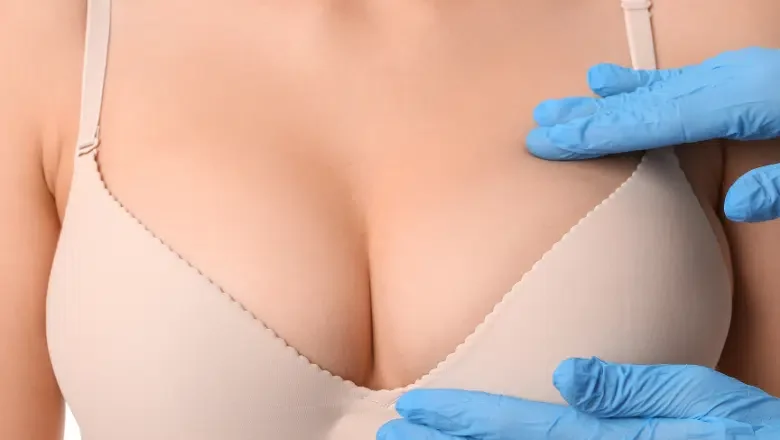Risks of Cosmetic Surgery
The risks and potential complications of cosmetic surgery will be discussed in detail during your face-to-face consultation. This is important as part of the informed consent process. Your surgeon will also discuss measures which will be taken to mitigate risks and how to manage complications should they occur.
RELATED: Conquering Apprehension: Addressing Common Concerns about Cosmetic Surgery
Achieving ideal surgical results depends on a close collaboration between the patient and surgeon. Please make sure you follow all of your surgeons, preoperative and postoperative instructions in full. This includes getting plenty of rest, eating healthy foods, and avoiding strenuous exercise. It is essential to avoid smoking to minimise the risk of wound healing complications.
RELATED: How to Avoid Botched Cosmetic Surgery
Top tips for reducing risks and complications of plastic surgery
It’s crucial to thoroughly read all the surgical information packs provided by our clinical support team. Focus on getting plenty of rest during the early recovery phase and adhere to wearing your compression garments as recommended. Refrain from removing any wound dressings or touching the incision site until it is fully healed.
If you smoke, you should quit at least four weeks before and after surgery to promote better healing and reduce complications. Additionally, inform your surgeon and anaesthetist about any medications you are taking, as some drugs can interact with the anaesthetic. For instance, aspirin can increase the risk of bleeding during and after surgery.
Notify your anaesthetist if you have had any previous issues with anaesthesia, such as difficulties in establishing an airway during induction. To minimise bacteria on your skin, use a chlorhexidine solution for your preoperative body wash both the day before and the day of surgery.
Successful surgical results depend on several factors, including having realistic expectations and a thorough understanding of the potential risks and complications of cosmetic surgery. Prepare your home ahead of time, ensuring you have a dedicated area for rest and recovery.
Always follow your surgeon’s instructions carefully, both before and after surgery, to ensure the best possible outcome.
RELATED: How to Reduce Complications after Plastic Surgery
What are the risks of high BMI for cosmetic surgery?
Having a high Body Mass Index (BMI) can elevate the risks associated with cosmetic surgery. Here are some specific concerns:
Patients with a higher BMI face increased anaesthesia risks, including potential respiratory and cardiovascular complications. The presence of excess fat and skin can make wound healing more challenging, leading to a higher risk of infection, bleeding, and poor scarring.
Obesity also raises the likelihood of developing deep vein thrombosis, where blood clots form in the legs and can dangerously travel to the lungs. Additionally, excess fat in the treatment area can hinder the surgeon’s ability to see and work on the underlying structures, which may affect the precision and outcome of the surgery.
Patients with a high BMI are more prone to complications such as infection, bleeding, and poor healing, often necessitating additional surgeries or even hospitalisation. The recovery period can also be more arduous due to the added stress on the body and the increased risk of complications.
Risks and Potential Complications of Cosmetic Surgery
General risks of surgery
- Bleeding or haematoma
- Excessive scarring, including hypertrophic and keloid scars.
- Post-operative surgical site infection
- Deep vein thrombosis or pulmonary embolism
- Unsatisfactory surgical results requiring revision surgery
Specific risks of surgery
Anaesthetic risks
General anaesthesia is extremely safe thanks to significant advances over the last decade. Nausea and vomiting, sore throat or allergic reactions are recognised risks of anaesthesia, although they are infrequent. If you have any concerns about anaesthesia, please discuss this with your anaesthetist before surgery. Make sure to let the anaesthetist know if you have had previous difficulty during anaesthesia or surgery or if you have serious health problems such as heart or lung disease.
RELATED: Anaesthesia for Cosmetic Surgery
Bleeding and haematoma
Bleeding is a recognised risk of any surgical procedure. In some cases, bleeding may occur after the procedure is complete, which may require a return to the theatre for evacuation of the haematoma.
Seroma
Seroma may sometimes form near the surgical site, and occasionally occurs after liposuction procedures. They can be easily treated using needle aspiration in the clinic or surgical evacuation in the theatre.
Infection
Wound infection may occur after surgery. Your surgeon will take steps to minimise the risk of infection by using an aseptic technique during surgery and may prescribe antibiotics for you to take after surgery. You should also clean your body with the recommended chlorhexidine body wash before and after surgery.
Wound breakdown
Delayed wound healing, leading to wound breakdown, is often related to smoking or vaping. Smoking and vaping are associated with a high risk of wound complications. You should not smoke or vape for at least four weeks before and after surgery to minimise the risk of complications.
Excessive scarring
Keloid scars and hypertrophic scars sometimes develop after surgery and are often related to having darker skin. Most scars fade, gradually over time, to a faint, whiter colour. Keloid scars often remain lumpy and require steroid injection treatment, often combined with surgical removal for effective results.
RELATED: Scar Management After Cosmetic Surgery
Serious complications of surgery
Deep vein thrombosis
(DVT) occurs when blood clots form in the deeper veins of the legs. It is often related to prolonged immobility or compression, leading to poor blood flow. The risks of DVT increase both during and after surgery, as the blood is in a hypercoagulable state.
Heart attack or stroke
The risk of heart attack or stroke is very low in fit and healthy patients. As people get older, the risk increases. People who have a history of heart or lung disease may not be suitable for elective plastic surgery. Further tests may be required for certain patients who have risk factors for cardiovascular disease before being cleared for surgery.
NOSE SURGERY RISKS
Risks and potential complications of nose surgery
In addition to the general risks of surgery discussed above, the specific risks of rhinoplasty surgery include the following:
- Nasal asymmetry
- Septal perforation
- Nasal bridge collapse
- Development of a Polly beak deformity
- Temporary or permanent numbness
- Persistent pain
- The need for additional cartilage grafts from the ear or ribs
RELATED: Risks Of Rhinoplasty Surgery – How To Have A Safe Nose Job
Risks and potential complications of rhinoplasty or nose job
As with any plastic surgery procedure, nose reshaping involves certain risks and complications, including:
- Persistent swelling
- Post-operative infection
- Difficulties in breathing
- Under or over-correction of the nose bridge
- Unhappiness with results
- Anaesthetic complications
These are just some of the recognised risks and complications of nose surgery. Choosing an experienced rhinoplasty surgeon will help to significantly minimise the risk of complications occurring during and after surgery to help you get the best results.
RELATED: Is revision rhinoplasty worth it?
FACIAL SURGERY RISKS
Risks and potential complications of Eyelid Lift surgery – Blepharoplasty
Recognised risks of eyelid lift surgery include:
- Dry eyes
- Excessive scarring
- Haematoma
- Bruising
- Droopy eyelids
- Eyelid, asymmetry
- Visual disturbance
- Blindness (very rare)
- Ectropion or entropion
- Hyperpigmentation
- Need for revision surgery
It is vital to have a detailed clinical assessment, as certain medical conditions can increase the risk of eyelid surgery. These include those who have dry eyes due to insufficient tear production. Thyroid disease, including Graves’ disease and hypothyroidism, can also increase the risk of blepharoplasty. People who have a history of serious eye disease, including retinal detachment or glaucoma, should have a specialist assessment by an ophthalmologist before having cosmetic eyelid surgery.
RELATED: Risks of Blepharoplasty Surgery – Eyelid Surgery Risks
Risks of facelift surgery
Risks of facelift surgery, also known as rhytidectomy, include:
- Bleeding or haematoma
- Post-operative infection
- Excessive scarring, including keloid scar formation
- Hairline distortion or hair loss
- Damage to the facial nerve with resulting facial weakness
- Persistent numbness
- Facial asymmetry
- Pixie ear deformity
Risks of neck lift surgery
Recognised risks and complications of neck lift surgery include:
- Anaesthetic complications
- Bleeding
- Haematoma
- Wound infection
- Skin necrosis
- Facial asymmetry
- Alteration in skin sensation
- Hyperpigmentation
- Excessive scarring
- Need for revision surgery
RELATED: Risks Of Neck Lift Surgery – Is A Neck Lift Safe?
BREAST SURGERY RISKS
Risks and potential complications of breast surgery
All surgical procedures involve certain risks, and it is important to be aware of them before breast surgery. Although your surgeon takes all necessary precautions to minimise complications, they can still occur despite carrying out breast surgery correctly. It is important to be aware of the potential risks and complications of breast surgery by speaking to your surgeon at the in-person consultation before making an informed decision. Complications of breast surgery include:
- Bleeding or haematoma
- Post-operative surgical site infection
- Loss of nipple sensitivity
- Breast implant rupture
- Capsular contracture
- Difficulties with breastfeeding
- Ability to feel the edges of the implant
- Breast asymmetry
- Breast implant malposition
- Rotated anatomical breast implants
- Alteration in skin sensation
- Implant rippling
- Seroma
- Persistent swelling
- “Bottoming out” of implant
- Breast implant illness
- Persistent pain
- Need for revision surgery
- BIA-ALCL (textured implants)
- Animation deformity
- Excessive scarring, including keloid scars
Risks of breast augmentation surgery
Your surgeon will discuss the potential risk of complications of breast implant surgery at your in-person consultation. It is important to be aware of the potential risk of breast augmentation surgery before proceeding with the procedure. Complications can still occur despite receiving the best possible medical care. You should take time to read the pre-operative information pack before surgery so that you are familiar with what to look out for in the recovery period after breast augmentation.
- Bleeding/haematoma formation
- Excessive scarring
- Capsular contracture
- Breast implant animation deformity
- Breast implant malposition
- Breast asymmetry
- Breast implant rupture
- Anaplastic large cell lymphoma (BIA-ALCL)
- Loss of nipple sensation
- Inability to breastfeed
- Wound infection
RELATED: What are the risks of breast augmentation?
Risks of breast implant replacement
The general risks of breast surgery, which include infection, bleeding, excessive scarring, and adverse reactions to anaesthetic, have been discussed above. The specific risks and complications of breast implant replacement include:
- Breast implant leakage or rupture
- Capsular contracture
- Implant malposition
- Breast Implant rippling
- Wrinkly skin over the implant
- Breast implant illness (BII)
- Persistent pain in the breast
- Need for revision surgery to remove or replace the breast implant
Risks of breast lift surgery
As with any surgical procedure, it is essential to be aware of the potential risk of complications of breast lift surgery. Your plastic surgeon takes great care during your procedure to minimise surgical risks, although complications can and do occur despite everything proceeding smoothly.
RELATED: Breast Lift Risks and Complications – Is Mastopexy Surgery Safe?
Specific risks of breast lift surgery include:
- Nipple or areola necrosis
- Loss of nipple sensitivity
- Breast asymmetry
- Fat necrosis
- Unable to breastfeed
RELATED: Breast Lift Scars – what you need to know
Risks of breast reduction surgery
Breast reduction surgery is a safe procedure by an expert plastic surgeon. All types of surgery involve certain risks of which you should be aware. Your surgeon will discuss the risk of breast reduction with you at your consultation, which includes:
- Partial or total nipple loss (higher risk in large breast reductions)
- Loss of nipple sensitivity
- Inability to breastfeed
- Lumpiness in the breast
- Asymmetrical breasts
- Excessive scarring, including keloid scars
RELATED: Risks Of Breast Reduction Surgery And How To Minimise Them
RELATED: Breast Reduction Complications – Reducing Risks of Surgery
BODY SURGERY RISKS
Risks and potential complications of body surgery
Body contouring surgery is commonly carried out at Centre for Surgery and involves certain risks, including:
- Anaesthetic complications
- Haematoma
- Persistent swelling
- Lumpy skin
- Loose skin
- Excessive scarring
- Wound breakdown
- Persistent numbness
- Surgical site infection
- Asymmetry
- Delayed wound healing
- Hyperpigmentation
- Skin necrosis
Risks of liposuction surgery
In addition to the general risks of any surgical procedure, it is important to be aware of the specific risks of liposuction by reading the preoperative information pack in full before surgery. Our clinical support team will also be able to assist you should you have any questions or concerns. Risks of liposuction surgery include:
- Bleeding and haematoma
- Wound infection
- Skin loss
- Lumpy skin
- Alteration in skin sensation
- Excessive scarring
- Asymmetry
- Permanent numbness
- Damage to visceral organs
- Pneumothorax
- Requirement for revision surgery to improve the results
RELATED: Loose Skin after Liposuction – Top Tips for Prevention and Treatment
Risks of tummy tuck or abdominoplasty surgery
A tummy tuck, also known as an abdominoplasty, is commonly performed at our Baker Street clinic and involves certain risks of which patients should be aware. Tummy tuck risks will be discussed in further detail at your consultation and include the following:
- Skin necrosis
- Partial or total loss of the umbilicus
- Delayed wound healing
- Wound infection
- Excessive scarring
- Fat necrosis
- Scar asymmetry
- Seroma or haematoma formation
RELATED: Risks of Abdominoplasty Surgery – Is a Tummy Tuck Safe?
Risks of gynecomastia surgery
Gynecomastia surgery, also known as male breast reduction, is commonly requested by men to get rid of man boobs. Gynecomastia surgery should only be performed by a specialist surgeon to minimise the risk of complications. Despite receiving the best medical care, complications can still occur, and the recognised risks of male breast reduction surgery include the following:
- Infection
- Bleeding and haematoma
- Visible areola scarring
- Incomplete breast tissue removal
- Loss of nipple sensitivity
- Chest asymmetry
- Irregular chest contour
- Crater deformity
- Recurrence of gynecomastia
RELATED: Recovery after Gyno Surgery
How to minimise risks of cosmetic surgery in the UK
To reduce the risks associated with cosmetic surgery in the UK, consider the following steps:
Select a qualified and experienced surgeon. Ensure they are fully trained in plastic and cosmetic surgery and registered with the General Medical Council (GMC).
Conduct thorough research on the procedure you’re interested in. Understand the potential risks, complications, expected recovery time, and possible outcomes.
Choose a reputable clinic. Look for one that is registered with the Care Quality Commission (CQC), has positive reviews, and a strong track record of patient satisfaction.
Maintain realistic expectations. Recognise that cosmetic surgery is not a magic solution and comes with inherent risks and limitations.
Have a comprehensive consultation. Discuss your medical history and goals with your surgeon, ensuring you understand the risks and benefits of the procedure before making a decision.
Adhere strictly to postoperative instructions provided by your surgeon. This is crucial for minimising complications and ensuring the best possible recovery.
Prepare for the recovery period. Have realistic expectations about the recovery time and plan accordingly to accommodate your healing process.
Take your time to make an informed decision. Avoid rushing into cosmetic surgery; ensure you are well-informed and confident about your choice.
Plastic & Cosmetic Surgery at Centre for Surgery
Centre for Surgery is the leading plastic surgery clinic in London and our UK consultant plastic. Surgeons have years of experience performing all types of elective plastic surgery at our state-of-the-art Baker Street clinic in Marylebone. Call us today on 020 7993 4849 or complete the contact form below to schedule a face-to-face consultation. One of our friendly and knowledgeable Patient coordinators will act as your personal point of contact throughout your journey with us at Centre for Surgery.
















